- Home
- David Hewson
The Villa of Mysteries nc-2 Page 5
The Villa of Mysteries nc-2 Read online
Page 5
“Maybe he’s right,” he said.
She opened her eyes and turned her head lazily, just enough to meet his gaze. She had very bright eyes, vivid green, never still. Not smart eyes, he thought. Just sufficiently expressionless to hide the odd lie.
“About what?”
“About us getting along a little better.”
She became alert, alarmed perhaps. She looked at the door. There was a hard cast in her face: fear.
Mickey got up, stretched his arms and yawned. He was wearing a thin tee-shirt and tight designer jeans. She watched him, worried. They heard the sound of the big main door to the street slamming shut three floors below, and then, directly after, the growl of the departing Mercedes.
Adele Neri got up from the sofa, went to the door and threw the bolt, walked across to her stepson, put a hand on his fly and ran the zip down, clutching at what was inside.
“You need to shop for new pyjamas,” Mickey said.
“What?”
He took hold of the neckline of her top and tugged hard with both hands, tearing at the silk. The fabric ripped wide open. Her meagre white breasts came under his fingers. He bent down, sucking at them briefly, then jerked down the pants, helping her shrug out of the things, running his palms everywhere, letting his tongue work briefly into her small, tight navel, then slide lower into the thatch of brown hair.
Mickey got up, cupped his hands around her thin, tight buttocks, gripped her thighs, lifting her into the air, pushing backwards until her shoulders were up against the door. The green eyes looked into his. Maybe there was an expression there. Need. Maybe not.
“Never much wanted to bang a skinny chick until you came along,” he mumbled. “Now I don’t want to bang nothing else.”
She was doing things with her hands, things that were sneaky and gentle and rough and unsubtle at the same time. He was hardening in her fingers. His jeans were round his ankles now. She hitched up her legs and straddled his waist, holding on tight, guiding him.
“If he ever finds out, Mickey—”
“We’re dead,” he said, and felt his body meeting hers in all the right places.
Mickey Neri pushed himself forward, stabbing into her. It was the best feeling he’d ever known. She was squealing. She was going crazy, chewing on his neck, whispering filthy words into his ear, pulling his long hair. He pushed harder. He was in deep, as deep as it got.
“Worth it,” he panted, knowing already he’d have to work hard to prolong the pleasure. Maybe she knew some tricks there too. “Worth every second.”
“OK,” TERESA LUPO SAID briskly. “I spent many nights sweating over this but I’ll try to compress it as much as I can. Look—”
They did as she wanted, and got up to stand over the cadaver. She seemed quite young, Costa thought, halfway between girl and woman. Perhaps seventeen, if that. Her face was disconcerting, still alive somehow and undoubtedly beautiful. Her features seemed Saxon or maybe Scandinavian. They had the precise, symmetrical perfection he associated with fair-haired northerners. Someone had washed part of her matted hair. It was now a kind of muddy blonde, tinted by the redness of the peat. The smell was pungent close up too.
“You will recall,” Teresa said, pointing at the cavity around the cadaver’s throat, “that our thoughtful American friend tried to remove her head, believing it to be that of a statue. This wound was caused by the sharp end of his shovel. I’m amazed you people let the bastard go without doing a single thing to him, by the way, but that’s your decision, not mine.”
“Hear, hear,” Peroni agreed.
“We went through this, Gianni,” Costa said. “What were we supposed to charge them with?”
“Drunk driving?” Peroni suggested.
“Couldn’t hold them in the country until trial.”
The older man scowled. “How about disrespect? Yeah, I know. It’s not a crime. Maybe it ought to be.”
Teresa smiled at Peroni and said, “I agree.” Then she took a pointer and indicated an area on the girl’s neck, just above the deep gash made by Bobby Dexter’s spade. “You can still see what happened originally though. That shovel wasn’t the first time someone struck a blow here. The girl’s throat was cut. From behind too. From the wound you can see whoever did it worked from side to side. It doesn’t work like that if they come in from the front. Then you just get a slash from the centre out. Here—”
There were more pictures on the desk. Careful blow-ups of the neck. “There’s the slice the bozo made. There’s hardly any earth on the tissue. But here—”
They looked closely at the photos. Close up the second, older wound, clearly tinted by the brown, acid water over the years, was unmistakable.
“That didn’t happen two weeks ago. That happened not long before she got put into the bog. That killed her.”
Falcone nodded at the pictures. “Good work,” he said. “That was all I wanted to know.”
“There’s more,” she added, trying not to look too eager.
Falcone laughed. She found it disconcerting that she amused him. “Don’t tell me, Doctor. You’ve solved the case. You have a motive. You know when. You know who did it.”
“That last part’s beyond even me. The rest… be patient.”
The inspector smiled, amused, and waved her to go on.
There was a book on the desk. She picked it up, and held it up for them to see. It was entitled Dionysus and the Villa of Mysteries. The cover photograph was of an ancient painting: a woman in a dishevelled dress, holding her hand over her face in terror of some half-seen night creature with staring, demonic eyes which leered at her from the edges of the image. The shapes had been damaged over the years. The creature was largely unrecognizable. But they could see what was depicted here. It was some kind of ceremony, one in which the woman was, perhaps, assaulted. Or even sacrificed.
“This was written by a professor at the university here,” she said. “I got put onto it by an academic at Yale who’d done some work on a bog body found in Germany, close to a Roman town.”
“This is relevant?” Falcone asked.
“I think so. Most of these deaths weren’t accidental. There was some kind of ritual going on. The guy who wrote this is trying to work out what that might be.”
“Something to do with Dionysus?” Costa asked. “I don’t get it. That’s Pompeü. We went there on a field trip when I was at school.”
“So did we,” Peroni added. “First time I ever got drunk.”
“Jesus,” she said. “What a pair you two make. Yes, Nic. The Villa of Mysteries is at Pompeü and, according to this guy, who is, I am reliably informed, the world’s living expert on the Dionysian mysteries, it is important. But it wasn’t the only one. Pompeü was the provinces. Suburbia if you like. It was small time compared to what went on elsewhere. In Rome in particular. Ask yourself. Who’s got the biggest churches? Us or them?”
Falcone sighed. “Point taken. And this book says what exactly?”
She waved the cover at them. Costa glanced at the terrified woman there. It seemed such a modern image. “Dionysus was a cult imported from Greece. You probably know him better as Bacchus.”
“Booze?” Peroni wondered. “You mean this is the result of a drunken orgy or something?”
She grimaced. “You watch too many bad movies. Dionysus was about much more than drink. This was a secret cult, banned as a pagan one even before Christianity because of what went on. Not easy to stamp out either. There were Dionysian rituals going on in Sicily and Greece until a few centuries ago. Maybe they’re still happening and we just don’t know about them.”
Falcone stared pointedly at his watch. “My jurisdiction ends at Rome.”
“OK, OK,” she conceded. “Rome.”
Teresa Lupo opened the book at a page marked with a yellow sticky note. “Here are some pictures, from a place in Ostia. Still suburbia, but around the time this girl was put in the bog this was Rome’s harbour town and a sight bigger than Pompeü. Lots of rich pe
ople. Lots of substantial villas on the edge of town, including this one…”
She pointed at an outline on the map then turned the page. There was a series of photographs of an old, churchlike building, then some interior shots of wall paintings. One of the scenes was the image from the front of the book. The rest was a frieze of dancing figures, human and mythical, dancing, coupling.
“Pompeü has a much fuller set of wall paintings. What they seem to show—at least the book claims—is the initiation ceremony for the cult. Not that anyone much understands them these days. The point is that they were all over the place. At Ostia. In Rome too. Probably with the big one hidden somewhere not far from the centre. The holy of holies.”
“What he calls the Palace of Mysteries?” Costa asked.
“Exactly,” she said, nodding. “Which is probably where this poor kid died. I took a good look at the dirt beneath her fingernails. It’s not estuarial. It didn’t come from Ostia. It could be from anywhere in central Rome.”
Peroni looked lost. “You mean these were temples or something? And they kept them hidden?”
“Not quite. More like fun palaces in the dark they could use when the time came.”
Peroni put his finger on the page and traced over the paintings. “Use to kill people?”
Teresa shrugged. “I dunno. You read this book and sometimes you think the guy is sure of what he’s saying, sometimes he’s making it up. What he thinks is that there could be bad consequences if the initiation went wrong. There was some kind of mysterious act which had to be performed with a representative of the god. Sexual, probably. Everyone got doped up to the nines so I imagine most of the time they didn’t have a problem getting their way with these kids. But if the initiate backed off…” She didn’t need to say the rest.
“She a virgin?” Peroni asked.
“I told you. I put off performing a full autopsy until I could get some idea of the date. Now we know I can pass it on to the archaeology people at the university. They can try to find out. From what I’ve seen it’s going to be impossible to tell. Sorry. Do you need to know?”
“Maybe not,” he admitted. “Look. Like I said, I’m no detective. But it seems to me there’s not a lot of meat here. Could be it’s all coincidence. Also—and I hate to point this out—that dating stuff just dates the dirt beneath her fingernails. Don’t date her.”
“I know, I know,” she said firmly. “Stay with it. I’m building a case here. You see what’s in her hand?”
The girl was holding some kind of wand or standard about a metre long, clutched to her side, the head disappearing under her arm. At the base was a protuberance of some kind, round and knobbly.
“This is exactly what the book describes, and that isn’t conjecture. It’s based on historical sources. I took samples. It’s made from several bound stems of fennel. At the top there’s a pine cone, wound into the staff. The thing’s called a ”thyrsus.“ It’s standard issue for Dionysian rituals. Look—”
She turned the pages of the book. There was a picture of a female figure, half dressed, holding the same kind of object, waving it in the face of a satyr, half man, half goat, leering at her.
“It’s used for protection. And purification.”
“Have you dated that?” Falcone asked.
“Radiocarbon costs,” she snapped. “You want me to spend time and money on this instead of something fresh off the street?”
Falcone nodded at the book. “Just asking. You’ve worked very hard, doctor. Congratulations.”
He still didn’t seem that interested.
“There’s one thing left,” she said quickly, as if she thought they might leave the room any moment.
“That is?”
“They found it with a metal detector, remember. How? There’s nothing metallic on her body. No necklace. No rings. No armlet.”
She wanted them to come up with an answer. It didn’t happen. Teresa Lupo went back to the desk and returned with an X-ray of the head. She placed it on the cadaver’s stomach. “See?”
It was a straight-on image of the girl’s skull. There was a bright object there, quite small, in the lower third.
“A coin beneath the tongue,” she said. “To pay Charon, the ferryman who took the dead across the Styx to the Underworld. Without it you never got there. I didn’t need any book to tell me that. I loved mythology when I was a kid.”
To Nic Costa’s surprise, Falcone was abruptly animated by this discovery.
“You’ve got it? The coin?”
“Not yet,” she said. “I was waiting for you.”
“Please—”
“Hey! I have other work, you know.”
They did know that. They also knew how much she liked to be right, and seen to be proved so.
She looked at the face, the half-open mouth, the perfect stained teeth. Then she examined the X-ray again, wondering where to start.
Teresa Lupo picked up a scalpel and, with one careful, clean movement, made an incision in the girl’s left cheek, level with her lower lip. She put the scalpel down then picked up a small pair of shiny steel forceps.
“They dated coins in those days. If this one’s anywhere in the range I outlined I expect you gentlemen to buy me dinner, one by one, in a restaurant of my choosing.”
“It’s a deal,” Falcone replied immediately.
“Ooh!” Teresa squealed with a fake girlish glee as she exercised the forceps, making sure they would do the job. “Dinner with cops! Aren’t I the lucky one? What will we talk about? Football? Sex? Experimental philosophy?”
The forceps entered the slice in the cheek. She turned the instrument deftly, probing, feeling, pushing. Then the arms clamped on something.
“Pass me one of those silver trays,” she said to Costa. “This is going to cost you guys plenty.”
Slowly, she retrieved the forceps from the girl’s mouth and placed an item in the dish. Then she poured some fluid into the pan and cleaned the thing gently with a tiny brush.
The object was a small coin which came up quite shiny. It was silver on the edges with a bronze centre, though both colours looked as if they were slowly transforming to copper through the stain of the peat. It was also familiar.
Teresa Lupo pulled over a large magnifying glass on a swan neck stand. The four of them crowded around the lens, peering at the thing. She turned it over. Twice. Just to make sure.
Peroni stood next to her, shaking his head. “My boy used to collect coins until someone told him it was uncool,” he said. “I helped him sort out his collection. Bought him one of those, mint condition. Dated the first year they issued it, 1982. Five hundred lire. You know something? It was the world’s first bi-metallic coin. No one had made one that was silver on the outside and bronze in the centre before. One other thing. If you look at the obverse, above the picture of the Quirinale, you’ll see the value written in Braille. That was unique too.”
No one was really listening. Peroni bristled. “Hey. Stupid old cop is sharing information here. Are you taking notes or am I speaking for my own benefit?”
“Shit,” Teresa Lupo whispered, glaring at the coin. “Shit.”
“You mean the body’s been in the peat for not much more than twenty years?” Costa asked.
“Not even that,” Falcone said.
They all turned to look at him. The inspector had returned to his briefcase and now had a folder in his hands. He opened it and took out a photograph. It was a portrait of a girl in her teens. She had long fair hair down to her shoulders. She was smiling for the camera.
He placed the photograph on the cadaver’s chest, over the X-ray of the skull. The features were identical.
“You knew?” She couldn’t believe this, couldn’t contain her amazement and anger. Peroni was chuckling, his shoulders rising and falling as if they were plugged into the mains.
Falcone was bent over, examining something on the girl’s left shoulder. A mark. A tattoo maybe.
“Just guessing to begin with.
You have to remember, doctor. I didn’t get back from holiday till yesterday. I hardly had the time to dig this…” he waved the case folder, “… out of the vaults.”
“You knew?” she repeated.
He bent down and looked at the mark on the girl’s skin. Costa did the same. It was a tattoo, circular, about the size of the coin: a howling, insane face with huge lips and long dreadlocks.
“It’s supposed to be a mask from an imperial Roman comedy,” Falcone said. “Dionysus was the god of theatre too. This was used by the Dionysian cults. You deserve that dinner, doctor. I’ll honour the bet. You were almost there. Just a couple of millennia out.”
Teresa Lupo pointed a stubby index finger at the inspector’s chest. “You knew? Eat your fucking dinner on your own.”
“So be it,” he answered. They watched him. Falcone couldn’t take his eyes off the tattoo. There was something going on inside the inspector’s head, something he didn’t seem much inclined to share.
“You’ll cancel the press conference,” he said.
“You bet,” she grumbled mutely. “But what should I say?”
“Make an excuse. Say you’ve got a headache. Tell them we don’t have the people, what with this flu thing and all. It’s the truth anyway.” He picked up the photograph from the dead girl’s chest and put it back in the envelope. Costa couldn’t help but notice Falcone hadn’t even let them see a name.
“Sir?” Costa asked, puzzled.
“Mr. Costa?” Falcone’s sparkling eyes gave nothing away. “It’s so nice to have you back with us.”
“What do you want us to do?”
“Catch a few crooks I imagine. Go help out down at the Campo. There’s a lot of pickpockets there at the moment.”
“I meant about this.”
Falcone took a final look at the corpse. “About this… nothing. The poor kid’s been lying in the mud for sixteen years. A day or two won’t make much difference.”
He rounded on all three of them. “And let me make one thing clear. I don’t want you breathing a word of what we have here to anyone. Not in this building. Not outside. I’ll call you when I need you.”

 The Garden of Angels
The Garden of Angels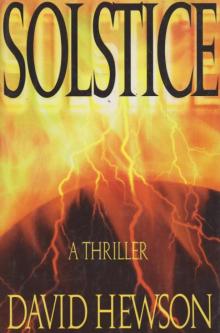 Solstice
Solstice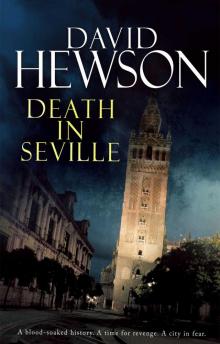 Death in Seville
Death in Seville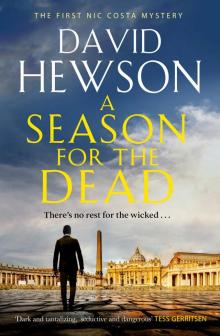 A Season for the Dead
A Season for the Dead The Killing tk-1
The Killing tk-1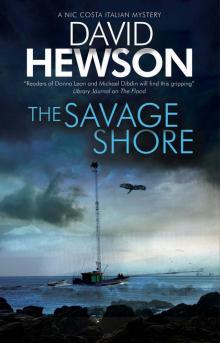 The Savage Shore
The Savage Shore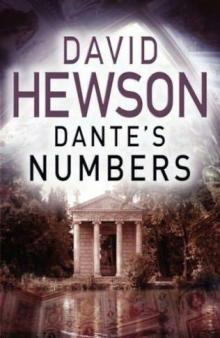 Dante's Numbers
Dante's Numbers Sacred Cut
Sacred Cut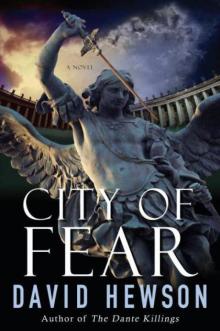 City of Fear nc-8
City of Fear nc-8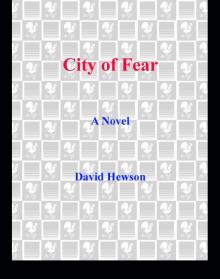 The Blue Demon
The Blue Demon The Garden of Evil
The Garden of Evil The Lizard's Bite
The Lizard's Bite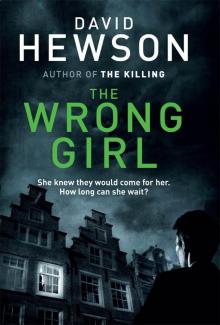 The Wrong Girl
The Wrong Girl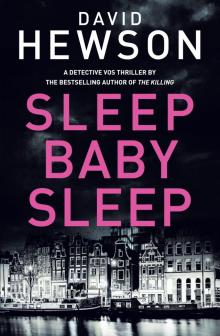 Sleep Baby Sleep
Sleep Baby Sleep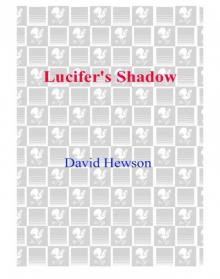 Lucifer's Shadow
Lucifer's Shadow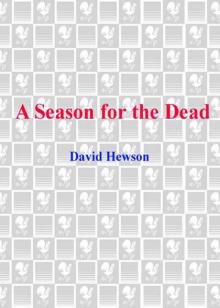 Season for the Dead
Season for the Dead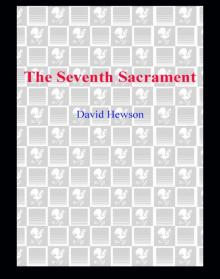 The Seventh Sacrament
The Seventh Sacrament The Garden of Evil nc-6
The Garden of Evil nc-6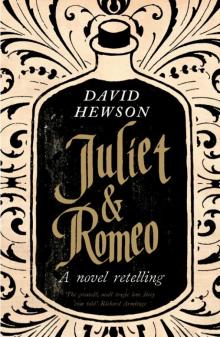 Juliet & Romeo
Juliet & Romeo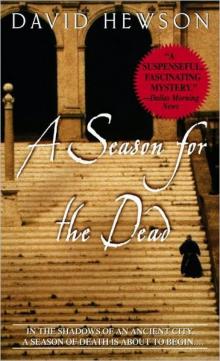 A Season for the Dead nc-1
A Season for the Dead nc-1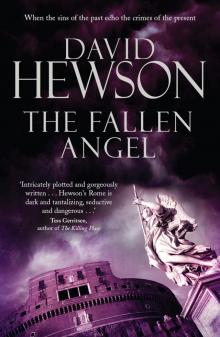 The Fallen Angel nc-9
The Fallen Angel nc-9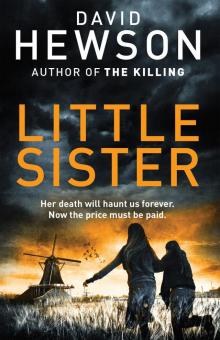 Little Sister
Little Sister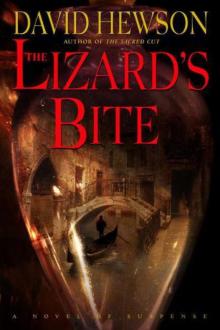 The Lizard's Bite nc-4
The Lizard's Bite nc-4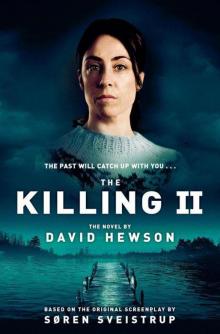 The Killing 2
The Killing 2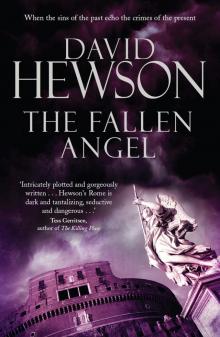 The Fallen Angel
The Fallen Angel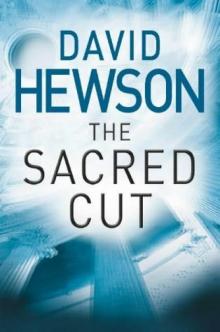 The Sacred Cut
The Sacred Cut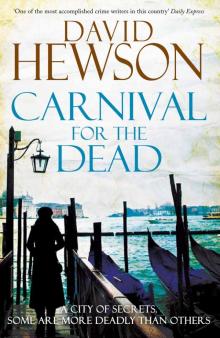 Carnival for the Dead
Carnival for the Dead The Villa of Mysteries nc-2
The Villa of Mysteries nc-2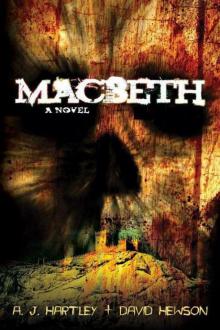 Macbeth
Macbeth The Killing - 01 - The Killing
The Killing - 01 - The Killing The Villa of Mysteries
The Villa of Mysteries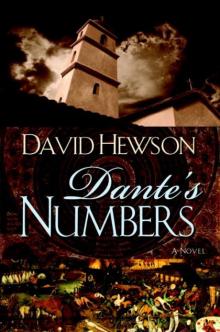 Dante's Numbers nc-7
Dante's Numbers nc-7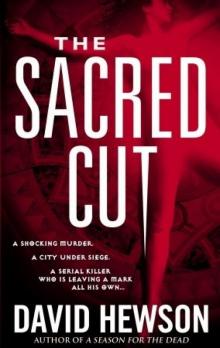 The Sacred Cut nc-3
The Sacred Cut nc-3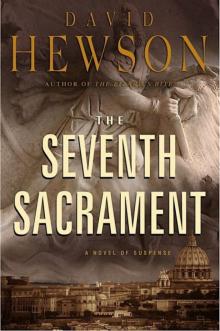 The Seventh Sacrament nc-5
The Seventh Sacrament nc-5